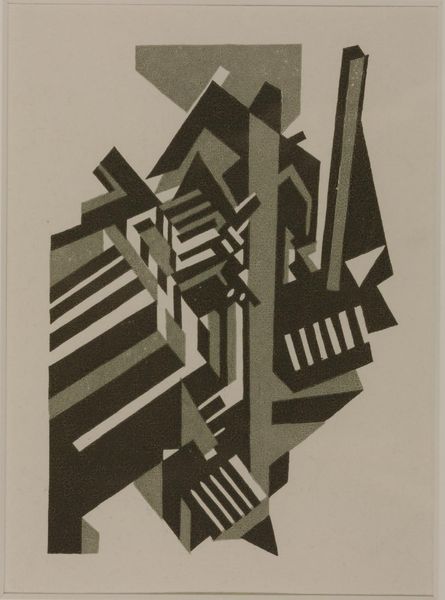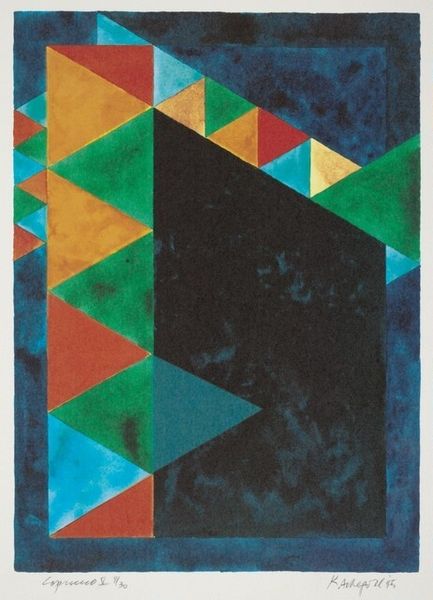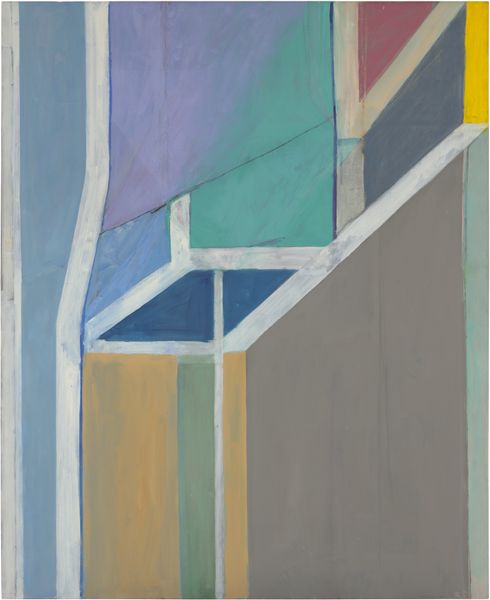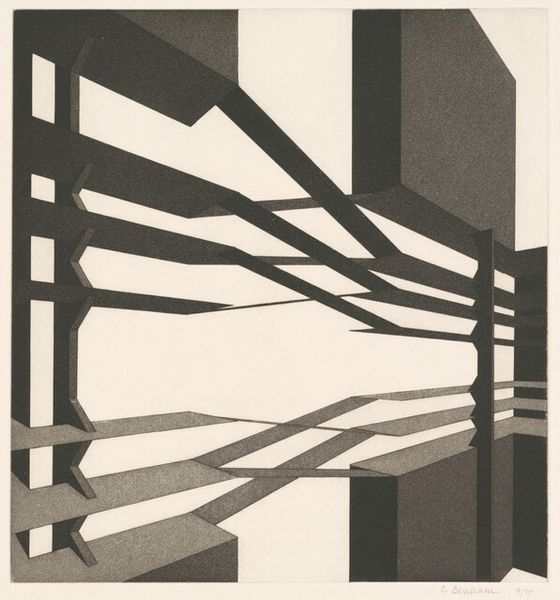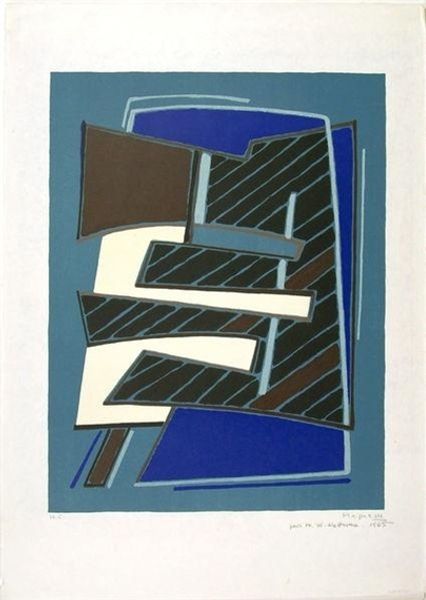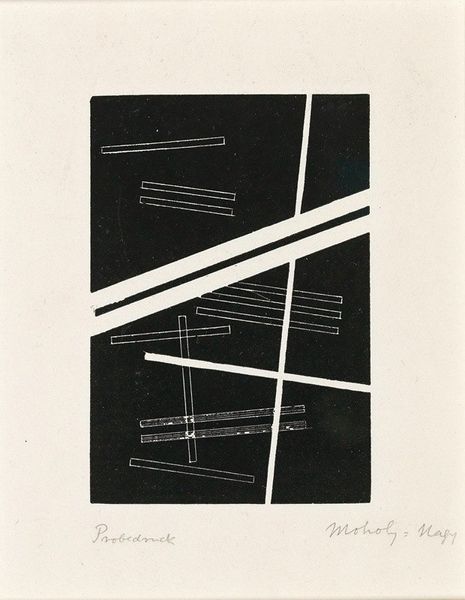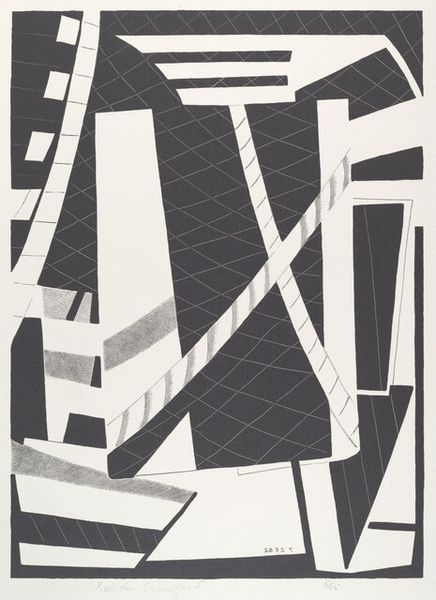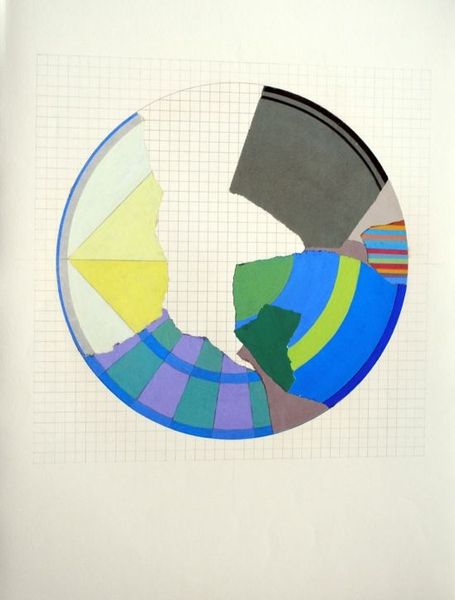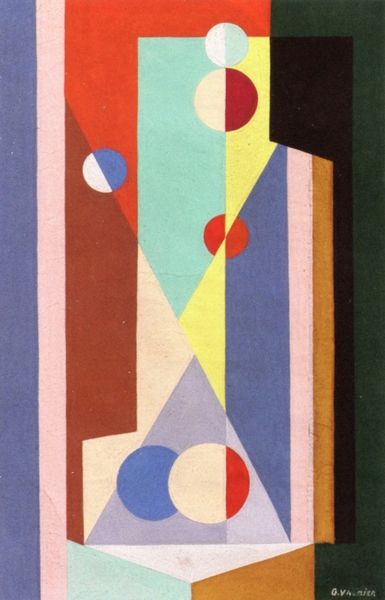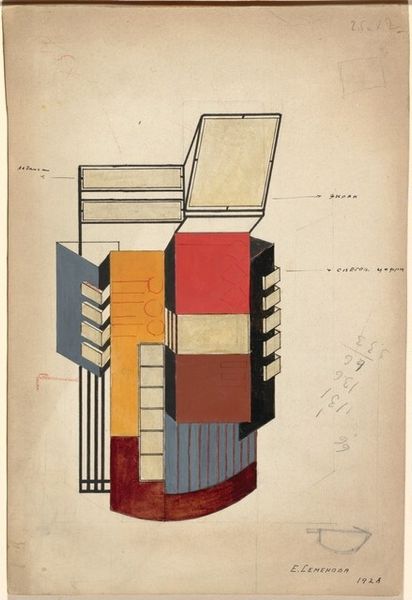
painting
#
cubism
#
painting
#
geometric composition
#
abstract
#
geometric pattern
#
minimal pattern
#
geometric
#
architectural render
#
abstraction
#
bauhaus
#
modernism
Copyright: Public Domain: Artvee
Curator: So, here we have Wassily Kandinsky’s “Kleine Flächen,” painted in 1936. Editor: Right away, it strikes me as...melancholy, almost. The dark background, the muted blues and greens trapped in those grids... feels like looking at a beautiful but slightly forgotten blueprint. Curator: That's interesting. The subdued palette is certainly there. Formally speaking, look at how Kandinsky is playing with isometric projection—creating a sense of depth while maintaining a flattened perspective. You've got these fragmented, skewed planes, each holding its own little world of color. Editor: It’s like each of those squares holds a tiny feeling, you know? A bit of sadness, a touch of hope with that single orange square, a splash of memory in the faded blues... Curator: Exactly! It's all about the interplay between those contained forms. The rigid structure emphasizes the individuality, but the underlying grid suggests some unifying, if invisible, order. The artwork can also be situated within his late Bauhaus period, where geometry was used to construct a systematic and abstract picture. Editor: It feels so planned, yet… human. Like someone trying to organize emotions or memories into neat little boxes, but they're all skewed and tilting and just threatening to spill out. And that delicate gold line? What a beautiful attempt at holding the world together. Curator: A very evocative reading. The gold lines also operate within the formal logic of the piece. Its delicate line art stands as an integral element of spatial and organizational structure within this artwork. Editor: What do you make of it? What speaks to you from that perspective? Curator: For me, it is the articulation of geometry itself that I admire most, a testament to Kandinsky’s life-long artistic and theoretical investigation into pure painting. These elementary forms allow Kandinsky to make what some have referred to as visual music. Editor: That’s such a lovely thought...visual music. It does resonate. Looking at “Kleine Flächen” has this effect of reminding one of our attempts to capture transient moments, thoughts, or emotions, no matter how abstract they might seem. It makes me think a little deeper about the relationship between life and our construction of the surrounding environment.
Comments
No comments
Be the first to comment and join the conversation on the ultimate creative platform.
